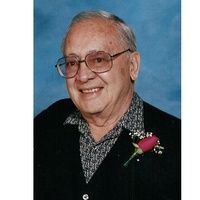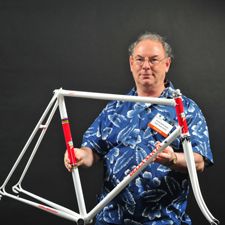Not so long ago, nobody would have named a product "Brooklyn". It was the declasse downmarket cousin of Manhattan. And, in certain circles, one could be judged (as I was) for having grown up in it. When I moved to the borough as an adult, I lived in a neighborhood where nobody would admit to being from Brooklyn. Instead, they told people they lived in Park Slope. I'll admit, I fell into that guise a few times.
Now, of course, "Brooklyn" is cool. At least, if you moved there from someplace else. Brooklyn's cachet isn't found in just any of the borough's neighborhoods: The one in which I grew up is not the hipster haven that Williamsburg--at least, a section of it--has become, and isn't a maze of young women in $200 yoga pants pushing $1500 strollers along bar- and restaurant-lined avenues, as "The Slope" has become. When marketers and entrepreneurs name their products or emporia after Brooklyn, they're not thinking about East New York or Brownsville--or even, for that matter, the parts of Williamsburg south of the eponymous bridge and east of Union Avenue, where Hasidim and Hispanics, respectively, live.
Lately, it seems that "bicycle" is starting to gain status, however slowly, in much the same way Brooklyn is. For as long as I can remember, the only non-bicycle related product named for the two-wheeler has been playing cards. And they were so named in the days when a bike cost about as much as the average worker made in a year.
Of course, you aren't going to find breakfast cereals or cosmetics named for anything velocipedic. At least, not now. That could change, however, very soon. Slowly but surely, our two-wheeled obsession is gaining status--in one industry, anyway.
Interestingly, that area is biotechnology. Perhaps it's not surprising when you realize that at scientists have likened the motion of at least one kind of molecule to the way pedals rotate around a bottom bracket.
So now there is a company called Bicycle Therapeutics. Now pharmaceutical giant Merck (funny, how much that looks like the name of the greatest racer of all time) has announced that it acquired a biotech startup that was ready to announce an Initial Public Offering.
The name of that company is Peloton Therapeutics.
Nicholas Janski of Barron's wondered whether would-be investors might mistake the biotech company--which actually is applying some of the recently-discovered knowledge about the "bicycle" molecules I've mentioned--for Peloton Interactive, the maker of at-home "spin" bikes. He cited similar confusion last month, when investors piled money into Zoom Technologies, causing the price of its stock to more than double, after Zoom Video Communications, an entirely unrelated company, announced its IPO.
(Me, when I hear "Zoom," I think of handlebars, stems, seatposts and other bike parts, mainly for mountain bikes!)
Hmm...I wonder whether Eddie bought stock in any of those companies. Does he think "Brooklyn" is cool?
Now, of course, "Brooklyn" is cool. At least, if you moved there from someplace else. Brooklyn's cachet isn't found in just any of the borough's neighborhoods: The one in which I grew up is not the hipster haven that Williamsburg--at least, a section of it--has become, and isn't a maze of young women in $200 yoga pants pushing $1500 strollers along bar- and restaurant-lined avenues, as "The Slope" has become. When marketers and entrepreneurs name their products or emporia after Brooklyn, they're not thinking about East New York or Brownsville--or even, for that matter, the parts of Williamsburg south of the eponymous bridge and east of Union Avenue, where Hasidim and Hispanics, respectively, live.
Lately, it seems that "bicycle" is starting to gain status, however slowly, in much the same way Brooklyn is. For as long as I can remember, the only non-bicycle related product named for the two-wheeler has been playing cards. And they were so named in the days when a bike cost about as much as the average worker made in a year.
Of course, you aren't going to find breakfast cereals or cosmetics named for anything velocipedic. At least, not now. That could change, however, very soon. Slowly but surely, our two-wheeled obsession is gaining status--in one industry, anyway.
Interestingly, that area is biotechnology. Perhaps it's not surprising when you realize that at scientists have likened the motion of at least one kind of molecule to the way pedals rotate around a bottom bracket.
So now there is a company called Bicycle Therapeutics. Now pharmaceutical giant Merck (funny, how much that looks like the name of the greatest racer of all time) has announced that it acquired a biotech startup that was ready to announce an Initial Public Offering.
The name of that company is Peloton Therapeutics.
Nicholas Janski of Barron's wondered whether would-be investors might mistake the biotech company--which actually is applying some of the recently-discovered knowledge about the "bicycle" molecules I've mentioned--for Peloton Interactive, the maker of at-home "spin" bikes. He cited similar confusion last month, when investors piled money into Zoom Technologies, causing the price of its stock to more than double, after Zoom Video Communications, an entirely unrelated company, announced its IPO.
(Me, when I hear "Zoom," I think of handlebars, stems, seatposts and other bike parts, mainly for mountain bikes!)
Hmm...I wonder whether Eddie bought stock in any of those companies. Does he think "Brooklyn" is cool?
























